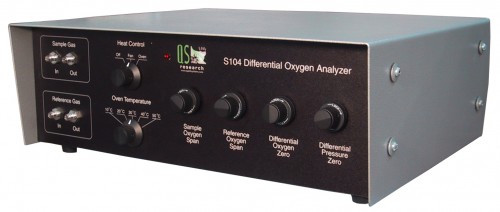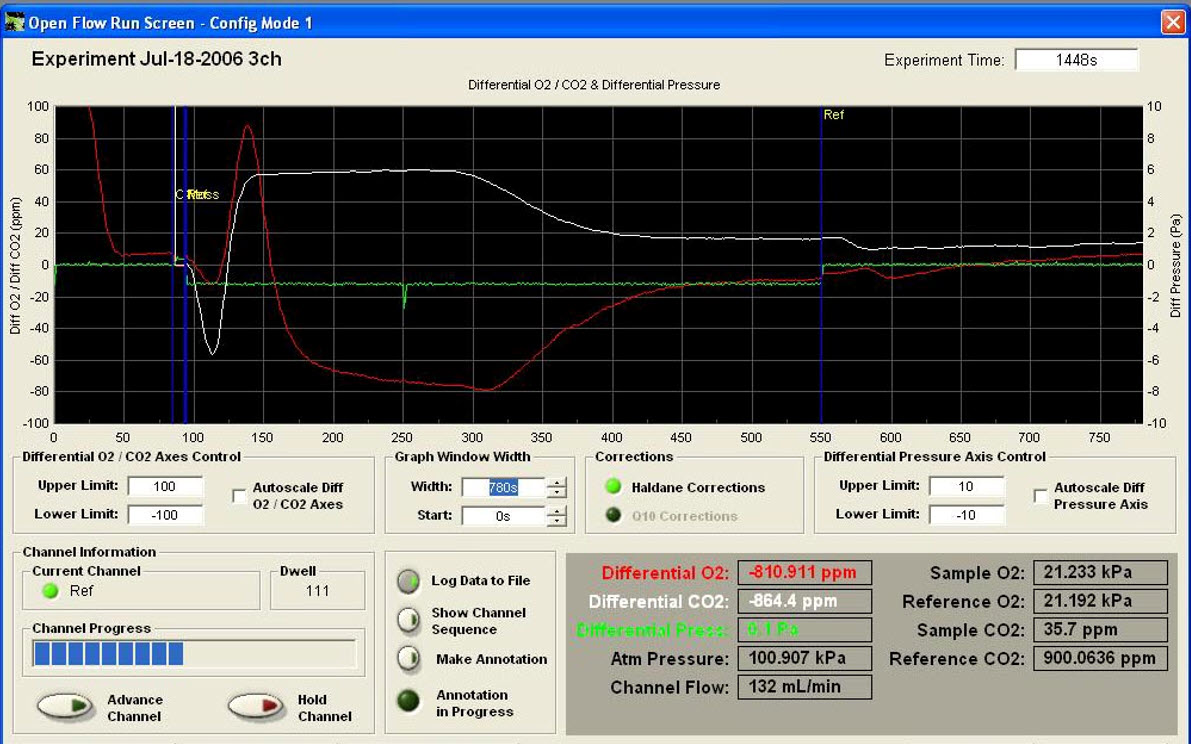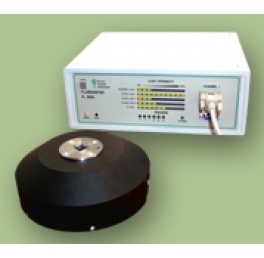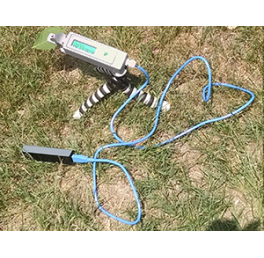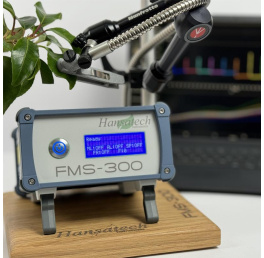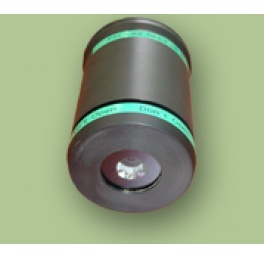Qubit Systems’ S104 Differential O2 Analyzer (DOX) is the world’s only patented differential oxygen analyzer with a resolution of ± 1 ppm O2 against a background of air. With the S104 DOX, researchers can measure real-time rates of respiratory oxygen consumption from tiny insects and photosynthetic oxygen production from a single intact leaf. The S104 Differential O2 Analyzer has the greatest dynamic range of any gas analyzer on the market and on a lower resolution setting it can measure O2 exchange in larger animals, even Human.
When used with a CO2 analyzer (S157) in an open gas exchange system, measurements of Gas Exchange Quotient allow non-invasive studies of respiratory metabolite determination and analyses of reductant flow in anabolic and catabolic reactions.
Features
- ±1 ppm oxygen resolution against air (that’s 0.0001%!)
- Widest dynamic range of any oxygen analyzer
- Easy calibration without special calibration gases
- Separate analog signals for reference and sample pO2
- Analog signals for differential pO2, absolute pressure, differential pressure, sample and reference cell temperature, instrument temperature
Applications
- Single Leaf Photosynthetic O2 Exchange
- Insect Respiratory O2 Consumption
- Small and Large Animal Respirometry
- Soil Respiration
- Leaf Dark Respiration Rate
- Human Metabolic Studies (Room Calorimetry)
Specifications
| Power Supply | 12V 115/220 VAC . |
| Oxygen Sensor life | 3 to 5 years (easily replaceable) |
| Analog Output | 0 to 5 V, Recommend using 16-Bit Analog to Digital converter |
| Absolute Signal range | Reference and Sample 0 to 100% O2 |
| Absolute Signal Resolution | 0.001%O2, |
| Absolute Signal Accuracy | +/- 0.002% O2, |
| Absolute Signal Response Time | T90 = 20 seconds, Partial Pressure measurement. |
| Differential Oxygen Signal Range | 1000 to 10000 ppmO2 (user defined), |
| Differential Oxygen Signal Resolution | 1 ppmO2, |
| Differential Oxygen Signal Accuracy | +/- 2.5 ppmO2, |
| Differential Oxygen Signal Response Time | T90 = 20 seconds, Partial Pressure measurement. |
| Absolute Pressure Signal Range | 15 to 115 kPa, |
| Absolute Pressure Signal Resolution | 0.01 kPa, |
| Absolute Pressure Signal Noise | < 0.01 kPa, |
| Absolute Pressure Signal Accuracy | 1% of Full Scale. |
| Differential Pressure Signal Range | is +/- 620 Pa, |
| Differential Pressure Signal Resolution | 1 Pa, |
| Differential Pressure Signal Accuracy | 1% of Full Scale. |
| Reference and Sample Air Temperature Signals Range | s 0 to 50 C, |
| Reference and Sample Air Temperature Signals Resolution | 0.01 C, |
| Reference and Sample Air Temperature Signals Accuracy | +/- 0.1 C. |
| Oven Temperature Signal Range | 10 to 50 C, |
| Oven Temperature Signal Resolution | 0.01 C, |
| Oven Temperature Signal Accuracy | +/- 0.1 C. |
References
- Willms JR, Dowling AN, Dong ZM, Hunt S, Shelp BJ, Layzell DB The simultaneous measurement of low rates of CO2 and O2 exchange in Biological Systems. Anal. Biochem. 254: 272-282 (1997)
- Willms JR, Salon C, Layzell DB Evidence for light-stimulated fatty acid synthesis in soybean fruit. Plant Physiol. 120: 1117-112 (1999)
- Cen Y-P, Turpin DH, Layzell DB Whole-plant gas exchange and reductive biosynthesis in white lupin. Plant Physiol. 126: 1555-1565 (2001)
- Amthor,JS, Koch GW, Willms JR, Layzell DB Leaf O2 uptake in the dark is independent of coincident CO2 partial pressure. J.Exp.Bot. 52: 2235-2238 (2001)
- Davey, PA, Hunt S, Hymus GJ, DeLucia EH, Drake BG, Karnosky DF, Long SP Respiratory oxygen uptake is not decreased by an instantaneous elevation of [CO2], but is increased with long term growth in the filed at elevated [CO2]. Plant Physiol. 134: 520-527 (2004)
- John P. Isanhart, F. M. Anne McNabb and Philip N. Smith. Effects of perchlorate exposure on resting metabolism, peak metabolism, and thyroid function in the prairie vole (Microtus ochrogaster). Environmental Toxicology and Chemistry Vol 24, Issue 3, p678–684 (2005)
- Efrat Elimelech And Berry Pinshow. Variation in food availability influences prey-capture method in antlion larvae. Ecological Entomology Vol 33, Issue 5, p652–662 (2008).
- Leakey ADB, Xu F, Gillespie KM, McGrath JM, Ainsworth EA, Ort DR. Genomic basis for stimulated respiration by plants growing under elevated carbon dioxide. PNAS Vol. 106 Number 9 pg.3597-3602 (2009)
- Meaghan Jenkins and Mark A. Adams. Vegetation type determines heterotrophic respiration in subalpine Australian ecosystems Global Change Biology Vol 16,p209–219 (2010).
- Gifford ME, Clay TA, Peterman WE. The Effects of temperature and activity on Intraspecific Scaling of Metabolic rates in a lungless Salamander. JEZ-A Ecological and Integrative Physiology. V 319, pg. 179-236 (2013)
- Gifford ME, Young VKH Limited Capacity for acclimation of thermal physiology in a salamander, Desmognathus brimleyorum Journal of Comparative Physiology 183, pg 409-418 (2013)
- Meier IC, Angert A, Falik O, Shelef O, Rachmilevitch S. Increased root oxygen uptake in pea plants responding to non-self neighbours. Planta 238, pg. 577-586 (2013)
- Glassey B, Gunson M, Muir R Context‐dependent costs and constraints of begging and non‐begging activity by common grackle nestlings at the scale of the nanoclimate. Functional Ecology V. 28, pg. 904-912 (2014)
- Artacho P, Saravia J, Decenciere Ferrandiere B, Perret S, Le Galliard JF. Quantification of correlational selection on thermal physiology, thermoregulatory behaviour, and energy metabolism in lizards. Ecology and Evolution V5, pg. 3600-3609 (2015)
- Pak NM, Rempillo O, Norman AL & Layzell DB Early atmospheric detection of carbon dioxide from capture and storage sites. Journal of the Air and Waste Management Association V66, pg. 739-747 (2016)
- Karvansara PR, Razavi SM Physiological and biochemical responses of sugar beet (Beta vulgaris L) to ultraviolet-B radiation. PeerJ 7:e6790 (2019)
- Najafi S, Medhi Razavi S, Khoshkam M, Asadi A Effects of green synthesis of sulfur nanoparticles from Cinnamomum zeylanicum barks on physiological and biochemical factors of Lettuce (Lactuca sativa). Physiology and molecular biology of plants 26, 1055-1066 (2020)




